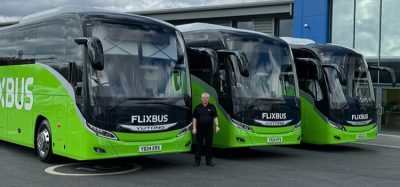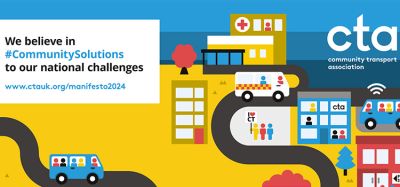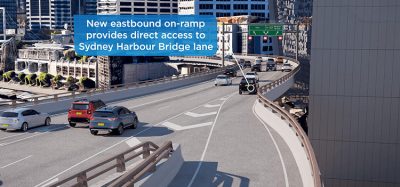ITS and urban mobility
- Like
- Digg
- Del
- Tumblr
- VKontakte
- Buffer
- Love This
- Odnoklassniki
- Meneame
- Blogger
- Amazon
- Yahoo Mail
- Gmail
- AOL
- Newsvine
- HackerNews
- Evernote
- MySpace
- Mail.ru
- Viadeo
- Line
- Comments
- Yummly
- SMS
- Viber
- Telegram
- Subscribe
- Skype
- Facebook Messenger
- Kakao
- LiveJournal
- Yammer
- Edgar
- Fintel
- Mix
- Instapaper
- Copy Link
Posted: 28 October 2010 | Dr. Hermann Meyer, Chief Executive Officer, ERTICO – ITS Europe | No comments yet
Over the years, Intelligent Transport Systems and Services (ITS) have evolved from research and development into a broad range of on-the-market products and services. Effective development and deployment of ITS in Europe depends on cooperative actions, linking transport infrastructure, vehicle, information and communication technology. ERTICO – ITS Europe is a public-private partnership for cooperating on […]
Over the years, Intelligent Transport Systems and Services (ITS) have evolved from research and development into a broad range of on-the-market products and services. Effective development and deployment of ITS in Europe depends on cooperative actions, linking transport infrastructure, vehicle, information and communication technology.
ERTICO – ITS Europe is a public-private partnership for cooperating on the effective implementation of ITS in Europe. Among its activities, ERTICO coordinates European projects in which its Partners develop and deploy new ideas to improve the mobility of people and goods across Europe.
The Partners of ERTICO share a vision of intelligent mobility towards fully informed people, towards zero accidents, towards zero delays, with reduced impact on the environment, where services are affordable and seamless, privacy is respected and security is provided.
Improving urban mobility is one of our key lines of action at ERTICO. The European Commission has recently implemented a platform on ITS and Urban Mobility to bring all the relevant stakeholders together to develop guidelines for the development of ITS in urban areas. The work of this platform will be actively supported by ERTICO.
Better mobility, better cities
Growing prosperity creates growing demand for mobility. Therefore, European cities are challenged by increasing problems caused by traffic and transportation.
The issue of climate change has prompted politicians to tackle greenhouse gas emissions. In general, the transport sector is one of the few significant emitters, responsible for nearly a quarter of the EU’s output and with some three quarters of that figure deriving in turn from road transport. Urban mobility in itself accounts for 40% of all CO2 emissions of road transport and up to 70% of other emissions from transport.
Moreover, congestion problems, mostly present in and around urban areas, cost European countries nearly €100 billion, or 1% of the EU’s GDP, every year – in addition, one in three road fatalities occurs in cities.
Sustaining the mobility needs of the European citizen whilst tackling the negative effects of transport, will be a real challenge for European cities in the next decade.
Conventional approaches such as the extension of the road network, are reaching their limits, are too expensive or will not give the necessary results on the timescales required by the importance of these challenges. Innovative solutions are clearly needed if we are to achieve rapid progress to improve urban mobility.
At ERTICO, we believe that it is high time for Intelligent Transport Systems to play their due role in providing cleaner, safer, more efficient, more comfortable and more co-modal mobility in cities. In taking into account the real demand of the user, ITS offers great solutions.
Stimulating eco-mobility with eco-driving and eco-traffic management
Vehicle technology on its own cannot fully mitigate the environmental impact of transport. While vehicle engines have become more efficient in recent years, eco-driving and eco-traffic management together with the appropriate infrastructure investments will help to reduce emissions significantly. Eco-driving and eco-traffic management represents an enormous fuel and cost saving potential, especially in urban areas.
Just by driving differently, motorists can save up to 20% on fuel consumption and cost! The challenge that is set in one of our flagship R&D initiatives – the eCoMove project – is to support drivers and traffic managers to drive and use the road infrastructure more efficiently with the use of new cooperative technology.
eCoMove will develop ITS systems and services that will support driving in a more fuel-efficient way as well as technologies to improve traffic management and control, demand and access management, navigation and travel information, as well as freight logistics and fleet management.
More-and-more, municipalities use ITS systems in a wider ecological sense. Charging and access management systems are used to influence and guide the access to city quarters or whole cities enabling energy and pollution reduction in urban areas as well as promoting the use of public transport and clean-cars. The recently accepted and ERTICO-supported COSMO project that will soon kick off will demonstrate the effectiveness of eco-traffic management applications like a dynamic access management system based on infrastructure- to-vehicle communication.
In addition, ERTICO is currently also identifying ITS services to support future electric vehicles. ITS will be essential to cope with the potentially lower range, to support the driver in finding energy sources and to establish the most suitable and cost-efficient energy management. In addition, there is an expectation that the electric vehicle will boost mobility services like car sharing, which can also benefit from ITS services.
The potential is enormous for Information and Communication Technologies (ICT) to increase fuel savings and reduce CO2 emissions, but more R&D is needed to develop and evaluate ‘green ITS’ solutions. In this context, standardisation is also important to ensure rapid market introduction across Europe.
Mitigating the negative effects of urban freight and logistics and improving ITS efficiency
Freight transport is a vitally important component of trade but yet suffers from substantial inefficiencies. European cities can profit from traffic management solutions to help them improve mobility efficiency, lower congestion delays and costs, reduce fuel consumption and CO2 emissions. At ERTICO, we are working on various projects which aim to improve these urban freight services and city logistics. A lot of technologies already exist to improve freight transportation in urban areas, but the challenge is to now have these deployed across European cities.
The ERTICO-coordinated FREILOT project looks at how to combine various urban freight energy efficiency services in four pilot cities within Europe (Helmond, Lyon, Krakow and Bilbao). The general idea of the project is that cities will implement priority for certain trucks at certain intersections (on certain roads and/or certain times of day) and provide this priority as an incentive to the truck fleets which implement acceleration, speed limiters and provide eco-driving support to their drivers.
In addition, cities will also provide possibilities to dynamically book and re-schedule delivery spaces. The objective of the pilot is threefold: firstly, we want to show how quantifiable benefits to all relevant stakeholders are, then, we want to ensure that FREILOT implementations continue after the pilot and lastly, we wish to extend the implementations to more cities and/or truck fleets. The project wants to demonstrate that, through the implementation of innovative technologies, a 25% reduction of fuel consumption on freight transport in urban areas is feasible.
Another project, CITYLOG, which started in January 2010, is looking at how to improve city logistics chains with ITS. The aim of CITYLOG is to develop an adaptive and integrated mission management tool to be integrated into innovative vehicle and transport solutions that will improve and increase the sustainability and the efficiency of urban delivery of goods.
The innovative approach of CITYLOG will lead to decreasing the number and optimising the use of delivery trucks in urban areas, while bringing increased quality of services. From the logistics operators’ point-of-view, the groundbreaking CITYLOG solutions and technologies are of highest interest due to the increased energy efficiency and quality of services.
Today, commercial vehicles leave their hubs for their delivery missions. The paradigm is: one vehicle, one mission. In the CITYLOG vision, the freight will be moved from the hub to the city centre by a ‘freight bus’ – a vehicle able to carry several load units. The load unit shall then be transferred on a van for the last mile delivery. These innovative and compact load units will have several configurations, for example the ‘bento box’ concept, a sort of mobile pack station.
Providing personalised traffic and travel information
An informed traveller makes a safer, greener and more efficient traveller – information on real-time and real-cost alternatives enables the traveller (but also traffic and road managers) to make an informed choice.
The traveller can request real-time infor – mation on the estimated journey time by car or public transport, and the real cost of the different options.
Route guidance, traffic information services and driver assistance systems can contribute by informing users of traffic jams and the best routes, while so-called ‘location-based’ services systems such as, in urban areas for example, parking guidance and booking send drivers directly to an available space.
When calculating travel times and cost, the route guidance system can also take into account incentive or reward schemes, access restrictions, and parking possibilities. The traveller can adapt his itinerary and mode of transport at all times, based on the latest information on the actual condition of the transport network.
ERTICO has several initiatives aimed at improving traffic and travel information services across Europe. In the past, ERTICO has been successful in developing the RDS-TMC standard. TISA, the Traveller Information Services Association, hosted and managed by ERTICO, now is the ‘guardian’ and ‘promoter’ of such standards which have proven their success. TISA ensures an international framework for marketdriven, coordinated, proactive implementation of traffic and travel information services and products based on these existing standards such as RDS-TMC, but also TPEG. The association is also looking into the development and deployment of future standards and services.
The i-Travel project, finalised in 2009, was also an important milestone towards the creation of an e-marketplace for these traffic and travel information services. The i-Travel project developed and tested a standard interface between a travel information provider and a user on their mobile and handheld devices; a kind of personalised, context-aware online ‘virtual travel assistant’ service for travellers, both before and throughout their journey. Efforts are focusing now on defining – at EU level – a so-called EWSP – European Wide Service Platform.
Other pilot projects, like In-Time, are building on the results of i-Travel and implementing multimodal Real-Time Traffic and Travel Information services in various pilot cities across Europe. The basic idea of In-Time is to deliver a model for intelligent and efficient travel management for European cities. At the moment, pilots are being carried out in Vienna, Brno, Munich, Bucharest, Oslo and Florence. The project will develop and validate an innovative pan-European approach to Real-Time Traffic and Travel Information (RTTI) services.
ERTICO is also looking further than Europe in this area. Through the EC funded Viajeo project, we have established international links with cities from emerging economies such as in Brazil and China. Within the scope of Viajeo, we will design and demonstrate, in various cities, an open platform concept to collect and process data for transport planning and traveller information. This will enable to support cross-modal journey planning and seamless traveller information services.
Cooperative mobility – the next step…
At ERTICO, we are preparing for the future connected world of cooperative mobility – where travellers, goods, vehicles and infrastructure communicate, share information and cooperate. It is in urban areas where we expect to find the biggest interest in and impact from cooperative systems.
This requires a new approach, creating a dynamic information network amongst travellers, cars and other modes, roadside infrastructure and information or management centres. The network will collect and distribute, in real-time, status information about traffic, the road network and transport services, as well as incident alerts and hazard warnings. With these future systems, drivers will be able to interact directly with the traffic control system, and road operators will be able to offer personalised journey advice, while optimising network management using knowledge of each vehicle’s destination. Both users and operators will be able to make choices based on near-perfect information on the state of traffic, of the roads and of the environment.
Enabling technologies for cooperative mobility were developed and validated in the Cooperative Vehicle Infrastructure Systems (CVIS) project coordinated by ERTICO, which finished in June 2010. This €41 million 4-year initiative, co-funded through the EC DG Information Society and Media, explored the performance and potential benefits of cooperative applications for urban and inter – urban traffic, and for freight and fleet management. The project culminated in the largest ever live demonstrations of cooperative systems, during the Intertraffic exhibition in Amsterdam in March 2010. One thousand visitors rode in one of the 10 trial minivans to experience at first hand over 25 different applications and various services. Featuring instant communication between vehicles, and to and from roadside units, services were demonstrated such as dynamic speed limits, parking space booking, hazard warnings, real-time public transport information and even social networks for car sharing.
Several other initiatives, such as the ERTICOcoordinated European project eCoMove and the Dutch SPITS project, as well as Test Site Trondheim in Norway, have now taken up the outputs of CVIS and are using Europe’s first open reference platform for cooperative systems for developing new applications or for predeployment field trials. CVIS results are also finding their way into new product and service development by CVIS partners.
To support the evolution of cooperative systems into fully deployed cooperative vehicles, infrastructure and services, ERTICO is launching a European ‘Cooperative Mobility Alliance’. The Alliance will be the place where all actors and stakeholders involved and interested in cooperative ITS will meet and communicate, and where they will work together to find practical solutions to any barriers impeding deployment.
Priority issues to be addressed by the Alliance include an overview and roadmap of the many organisations and activities in cooperative ITS; a common strategy for development and deployment; support for standardisation; compliance and certification; common specifications for implementation of systems and services; liability, legal and regulatory framework; business and organisational models; and public awareness and acceptance.
Conclusion
Europe’s urban areas are at the sharp end of the drive to make mobility truly sustainable, with reduced CO2 emissions and pollution, fewer accidents, less congestion, and where everyone has full and accurate information about all journey and transport choices.
Only the technologies and tools of cooperative ITS hold the potential to deliver solutions to these challenges, and ERTICO and its Partners are committed to realising their benefits as quickly as possible through support for Europe-wide deployment.
ERTICO has already made major con – tributions in developing the necessary applications and will further strengthen its engagement to bring intelligence into mobility and offer a win-win situation both for urban communities and businesses.
About the Author
Hermann Meyer
Hermann Meyer has worked for ERTICO since 2008, a Public-Private Partnership initiative to support the development and deployment of ITS in Europe. He is Vice-Chair of the eSafety Forum, Chairman of the eCall Implementation Platform, and a member of the Coordination Committee of the Network of National ITS Associations.
Related topics
Business Models, Fleet Management & Maintenance, Intelligent Transport Systems (ITS), Multimodality, Ticketing & Payments, Traffic Management, Transport Governance & Policy
Issue
Issue 5 2010
Related organisations
ERTICO - ITS Europe








